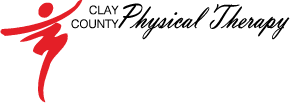What is parkinson's?
-
Parkinson's disease (PD) is a neurodegenerative disorder that affects predominately dopamine-producing (“dopaminergic”) neurons in a specific area of the brain called substantia nigra.
Symptoms generally develop slowly over years. The progression of symptoms is often a bit different from one person to another due to the diversity of the disease. People with PD may experience: Tremor, mainly at rest and described as pill rolling tremor in hands. Other forms of tremor are possible Slowness of movements (bradykinesia) Limb rigidity Gait and balance problems The cause remains largely unknown. Although there is no cure, treatment options vary and include medications and surgery. While Parkinson’s itself is not fatal, disease complications can be serious. The Centers for Disease Control and Prevention (CDC) rated complications from PD as the 14th cause of death in the United States.
READ MORE
EARLY SIGNS
LSVT BIG
-
Jolene Griess is a Certified LSVT BIG Clinician!
Recently principles of LSVT LOUD® were applied to limb movement in people with Parkinson disease (LSVT BIG®) and have been documented to be effective in the short term. Specifically, training increased amplitude of limb and body movement (Bigness) in people with Parkinson disease has documented improvements in amplitude (trunk rotation/gait) that generalized to improved speed (upper/lower limbs), balance, and quality of life. In addition, people were able to maintain these improvements when challenged with a dual task. LSVT BIG can be delivered by a physical or occupational therapist. Treatment is administered in 16 sessions over a single month (four individual 60 minute sessions per week). This protocol was developed specifically to address the unique movement impairments for people with Parkinson disease. The protocol is both intensive and complex, with many repetitions of core movements that are used in daily living. This type of practice is necessary to optimize learning and carryover of your better movement into everyday life! Start exercising NOW – as soon as possible. Physicians rarely refer their patients to health and fitness programs at diagnosis because medications are very effective early on at alleviating most of the symptoms, and patients experience little change in function. Yet, according to a recent survey it is at the time of diagnosis that patients often begin to consider lifestyle changes and seek education about conventional and complementary/alternative treatment options. Thus referrals to exercise, wellness programs and physical/occupational therapy would be best initiated at diagnosis, when it may have the most impact on quality of life.
CLICK HERE TO LEARN MORE
|

